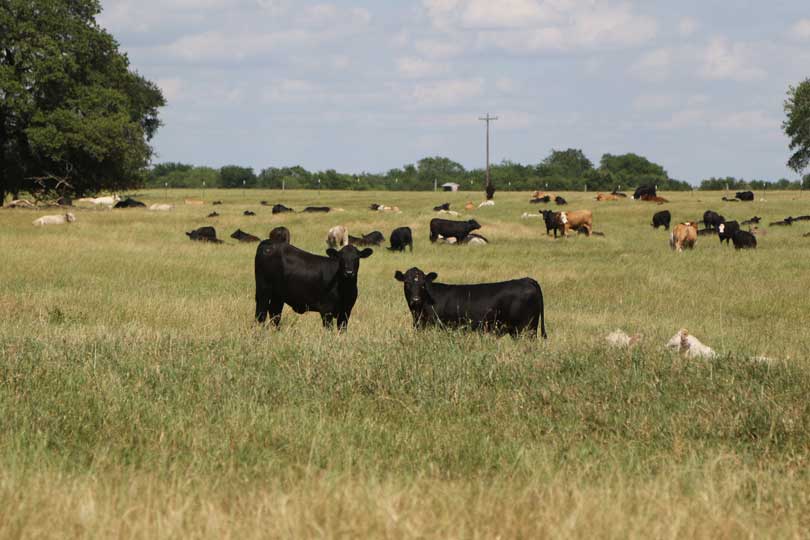By Julie Tomascik
Editor
Ranchers across Texas and the nation are raising the steaks. And they’re doing it with improved genetics and earning a premium for their efforts.
That’s part of the mission of the Northeast Texas Beef Improvement Organization (NETBIO), a group of independent cow-calf producers and agribusiness representatives who work together to enhance the beef sector in Northeast Texas through marketing cattle via eight sales each year.
The organization was established 20 years ago and aims to improve the genetic makeup of Northeast Texas commercial cattle herds and improve management practices to comply with or exceed the national quality assurance standards.
“We advocate for responsible stewardship of the natural resources in our care and work together to build a positive reputation for Northeast Texas beef,” Dwyatt Bell, NETBIO’s chief operating officer, said. “The efforts of our organization financially reward commercial cattlemen and women for adding value to their product.”
NETBIO held its first sale in November 1998. Two decades later, the group hosts eight sales and boasts a membership of about 900.
“We eventually grew to eight sales because we were getting too big for one sale,” Bell said.
And they were growing because cattle bring a premium, and it’s an avenue for smaller cattlemen and women to market their calves.
“Producers walk away with more money,” Bell said. “It’s an opportunity for all producers who wouldn’t be able to put enough cattle together at other auctions to get the higher dollar, so they bring them to the NETBIO sales and combine them with cattle from others. Then, they bring comparable prices to those other sales with large lots.”
Cattle must be raised to meet pre-conditioning standards established by NETBIO’s board of directors.
Vaccinations, weaning and proper cattle handling techniques are all aspects under annual review in order to maintain a top quality offering.
“Buyers love them because all the calves have been pre-conditioned, have shots to build up immunity and are put together by weights that are probably not going to vary more than 50-75 pounds,” Bell said.
An audit committee helps maintain the integrity of the organization and quality of cattle offered in each sale. It’s comprised of one sale barn representative and two veterinarians that serve on the NETBIO board.
“If we have problems reported after the sale with cattle that have a lot of sickness, if that buyer will keep those sales tags, the audit committee will see who consigned those calves and who the certifying vet was,” Bell said.
Cattle in NETBIO sales come from 54 Texas counties and six states outside of Texas.
The group selected the Sulphur Springs Livestock Commission to conduct all the sales because of its long-standing reputation in the industry, modern facilities, marketing expertise and sound management practices.
Bell noted the facility’s employees participate in Beef Quality Assurance training and use low stress livestock handling methods.
When cattle arrive at the Sulphur Springs Livestock Commission, staff sort, commingle and assign cattle to sale lots. This process creates larger groups of like-kind cattle, which also makes them more desirable to buyers.
“They can buy a whole load of cattle in one setting. Buyers love that and are willing to pay for it,” Bell said.
NETBIO also offers livestock marketing online through the Sulphur Springs Livestock Commission. Bell said they’ve sold up to 30 percent of calves online during certain special sales.
Sales sheets outlining the numbers from the most recent NETBIO sale are listed online at www.sslivestockauctions.com/netbio.html.
“You can see what the calves brought in the sale, and it will stay up until the next sale. Then, we’ll replace those numbers,” Bell said.
Since the first sale in 1998, NETBIO has marketed 531,000 head of calves for more than $407 million dollars.
But NETBIO is about more than a premium price for live cattle. It’s also about producer education.
“We try to educate producers—new and old—and keep them updated and focused on improving genetics and maintaining sound management practices for their herd,” Bell said.
The gr

